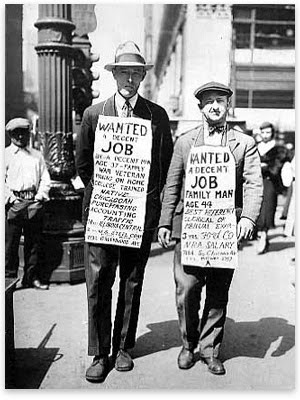
With credit tight and consumers still pinching their pennies, many business owners find they can't go on.
The actual number of small businesses in trouble is probably higher, experts said, because many owners file for personal bankruptcy rather than seek protection for the business.
Dennis McGoldrick, a bankruptcy lawyer in Torrance, said his clients are all stuck in similar situations -- capital is hard to come by, customers are tough to attract and debt is piling up.
"In this economy, anything that isn't a necessity is a tough business to be in," March said. "And the majority of my clients have waited too long to file for bankruptcy and in the process made things worse on themselves financially as a result."
Small-business bankruptcies rise 81% in California
With credit tight and consumers still pinching their pennies, many business owners find they can't go on.
With credit tight and consumers still pinching their pennies, many business owners find they can't go on.
By Nathan Olivarez-Giles, LA Times
December 22, 2009

The Obama administration's new plan to give a boost to small businesses reflects continued trouble in that sector, which is facing new failures even as much of the nation's economy is stabilizing.
As credit lines have shrunk and consumers have cut back on spending, thousands of small businesses have closed their doors over the last year. The plight of struggling firms has been aggravated by the reluctance of banks to lend money, said Brian Headd, an economist at the Small Business Administration's office of advocacy.
"While bankruptcies are up, overall, small-business closures are up even more," Headd said.
California has been particularly hard hit. The latest data show small-business bankruptcies up 81% in the state for the 12 months ended Sept. 30, compared with the previous year. Filings nationwide were up 44%, according to the credit analysis firm Equifax Inc.
The actual number of small businesses in trouble is probably higher, experts said, because many owners file for personal bankruptcy rather than seek protection for the business.
Dennis McGoldrick, a bankruptcy lawyer in Torrance, said his clients are all stuck in similar situations -- capital is hard to come by, customers are tough to attract and debt is piling up.
"We can't keep up," McGoldrick said. "There's more people that want to come in every day than I can see."
Cecily McAlpine, who filed for bankruptcy protection for her Cold Stone Creamery franchise this spring, said the experience was humiliating but she had no choice.
Receipts at the fledgling Compton ice cream shop plunged dramatically during the recession, and by late 2008 she was paying her employees out of her pocket.
"When the refrigerator died, that was it; I'd just had it," McAlpine said. "That was the day I broke. I just started throwing stuff away."
McAlpine recently withdrew her bankruptcy filing after selling all the store equipment and paying off her creditors. She is slowly paying off some back-rent and utility debt, and will officially dissolve her business in the next couple of weeks, she said.
"I still feel scarred and like a loser," she said. "Even though I'm not in it anymore, it's still there."
Recognizing the problems of business owners like McAlpine, the Obama administration has proposed using federal stimulus money to help funnel more loans to small businesses. The White House has also asked Congress to eliminate capital gains taxes for one year on new investments in small-business stock, and called for a new tax incentive to encourage small businesses to hire more employees.
On Dec. 14, Obama called a meeting of executives of Wells Fargo & Co., Citigroup Inc., Bank of America Corp. and nine other large banks, and told them that they owed it to the nation to make more loans to small businesses and help rebuild the economy.
In California, the need is great.
Over the last year, the Los Angeles, Riverside/San Bernardino and Sacramento metropolitan areas have led the nation in small-business bankruptcy filings, said Tim Klein, a spokesman for Equifax.
About 19,000 small businesses filed for bankruptcy in California during the 12 months ended Sept. 2009, up from 10,500 the previous year.
During September alone, 2,229 small businesses filed for protection, up from 1,503 filings in September 2008, the firm reported.
Kathleen March, a bankruptcy lawyer in Los Angeles, said she often pushes her clients to file for personal bankruptcy instead of a business filing because it's easier.
Many people also close down their businesses thinking that will solve their problems, only to find their companies' debt lives on, March said.
"The norm is if you're running a small business, you will have to either cosign or personally guarantee the significant debts," she said. "The business itself can shut down, but the people cosigned all the debts. So, the individuals are then saddled with these huge debts."
A client who owned a surf shop was paying for business expenses from the client's own funds long before filing for personal bankruptcy, she said.
"In this economy, anything that isn't a necessity is a tough business to be in," March said. "And the majority of my clients have waited too long to file for bankruptcy and in the process made things worse on themselves financially as a result."
Source: LA Times
Share






No comments:
Post a Comment